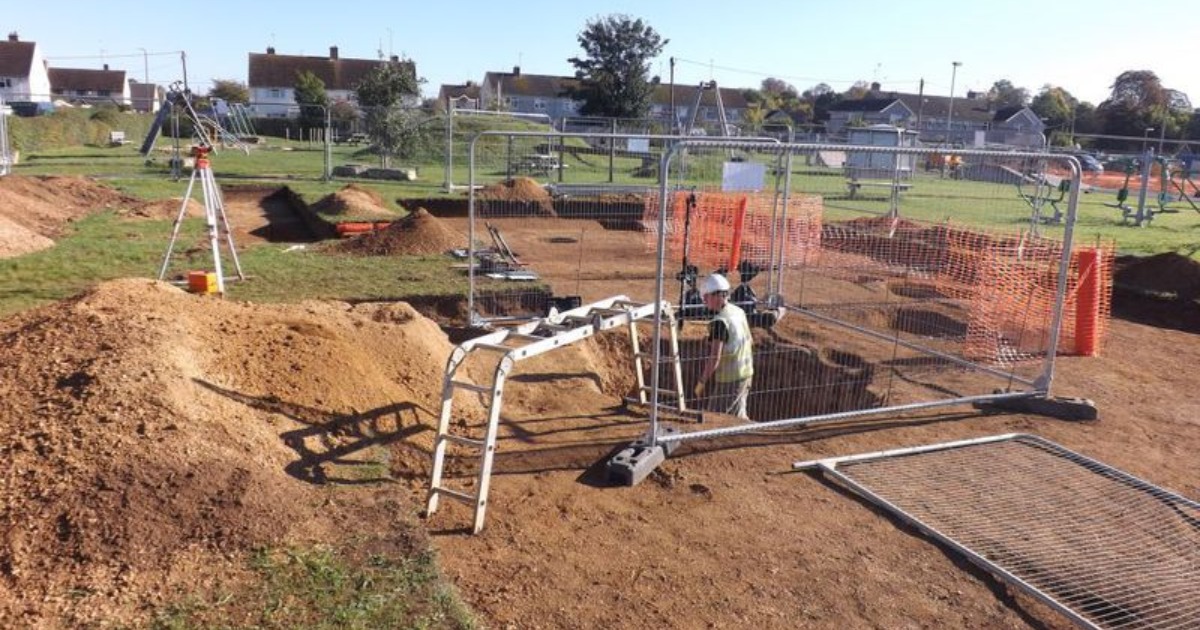A suburban skate park in the UK got a blast from the past when a Bronze Age chieftain’s burial was found where skaters usually practice ollies and kickflips. Between September 6th and the 29th in 2017 Lechlade-on-Thames, a town in the southwestern county of Gloucestershire in England, became a hotbed of archaeology after Foundations Archaeology in the UK began a series of excavations before a new skateboard park was built. Andy Hood, an archaeologist with the company, reports that several graves were found, but the one that was the most interesting was that of what is believed to be the remains of an extremely important man, a chieftain, who lived somewhere between 2287 to 2061 BC.
The Post Excavation Assessment report from Foundations Archaeology, published in December of 2018, announced that an adult male was found in a crouching position along with what were, at the time, expensive items including a copper dagger, an amber button, a stone wrist guard, and a kit with flint and iron pyrite to start a fire. The most telling artifacts were cattle head and hooves; using those in burials was common in the Early Bronze Age and usually reserved for the wealthy.
Often, a significant person was buried with the skull and one hoof of a cow, a “head and hoof” burial, but this man was buried with the skulls and hooves from four different cows. The burial was found in the center of what was once a circular pit made for such occasions within other circular pits. Just to the southeast within the pit closest to the first set of remains are the lower half of another man who passed in his 50s or 60s. The skeleton was in a seated position with his legs stretched out—something never before seen in discoveries from the Bronze Age in Great Britain.
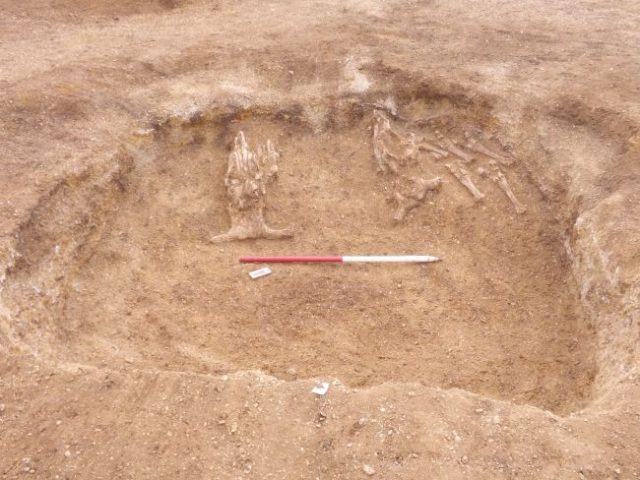
He also had a head and hooves burial but with only one set. The proximity of the two men lead Hood, on LiveScience, to wonder about the men’s relationship, noting that it appears there was some kind of social bond as they were buried near each other in a similar manner. It’s not clear, however, what that relationship might be. Some have speculated the younger man’s remains were that of a Shaman, but there is no evidence to determine he was anything but wealthy.
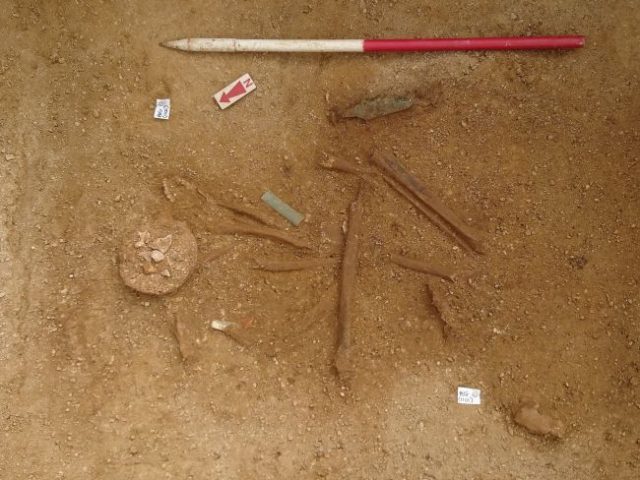
Archeologists believe these men were part of the Beaker culture, about 4,700 to 4,400 years ago and are called such because of their style of pottery which is an inverted bell shape. The bell-shaped pottery was included in most burials of this time, but there were none present in the grave of the wealthy man, leading scientists to believe he performed a specific function among his people such as Chieftain.
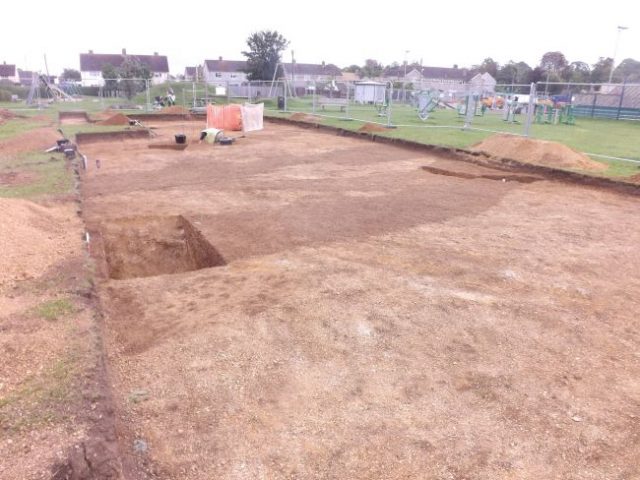
According to the Natural History Museum, the Beakers from Iberia spread into central Europe without a large scale single migration; rather, there was likely an exchange of goods and culture and a slow intermixing. Further migrations to places such as Great Britain later resulted in a 90% shift in DNA meaning the Beakers outpopulated the Neolithic majority in just a few hundred years.
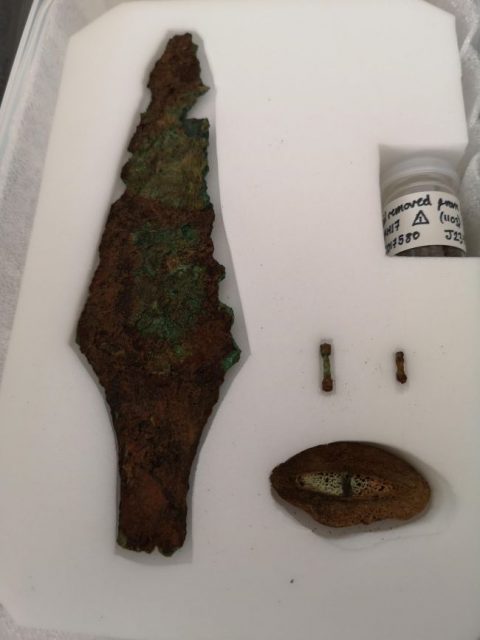
Professor Mark Thomas of University College London’s department of Genetics, Evolution, and Environment noted that archeologists must answer the question of how such a massive shift in population occurred. He notes that it’s possible that the original population was already on a decline; it’s also possible that the Beakers had a more developed culture with better survival strategies.
Lechlade-on-Thames, where the burial was found, was an important hub of activity in the early days of humans. The area holds an impressive number of archeological sites where researchers are finding layers of history from prehistoric times including the Neolithic and Chalcolithic periods through the Bronze and Iron Ages as well as the Roman and Saxon Ages clear up to the 18th century.
Related Article: Bronze Age Sword Disguised as Cheap Home Decoration Seized at Customs
Significant discoveries have been unearthed near Roughground Farm, Lechlade Memorial Hall, Butler’s Field, and at Sherborne House where several Anglo-Saxon burial sites have been found with pieces of animal bones, fish bones, snail shells, cereal grains such as barley and wheat, wood charcoal, apple seeds, and wild plant seeds such as clovers, rushes, and sedges.
